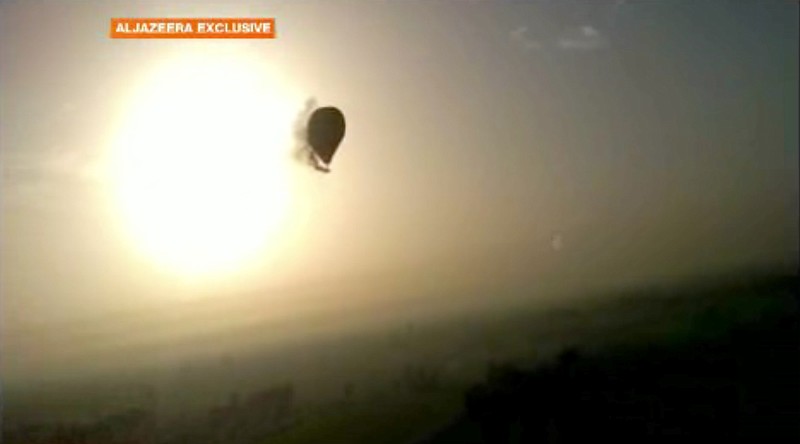LUXOR, Egypt (AP) - The fiery crash of a sightseeing balloon that killed 19 tourists has cast a further pall over this city of ancient temples and tombs, already perhaps the hardest hit by Egypt's two-year drop in tourism, which has left hotels empty and residents desperate for income.
Some connected to the tourist trade in Luxor, a city utterly dependent on foreign visitors to survive, were seething with anger Wednesday at the country's Islamist president for his silence over the crash.
Mohammed Morsi has yet to publicly speak about the tragedy - and some here took that not just as insensitivity to the victims' families but as indifference to the vital tourism trade.
"Morsi should have taken a plane and come here," said Salah Zaky, one of the owners of the five-star Steigenberger Hotel in Luxor, 320 miles south of Cairo. "The whole world is watching and he is asleep. It's as if there is no government."
Morsi spoke by telephone to Luxor's governor to discuss the balloon disaster, according to state media. Hours after the crash, he spoke live on TV at a meeting with political leaders - but only about upcoming parliamentary elections, without mentioning the crash.
"They don't care if this hotel closes. They only care about the ballot box," Zaky said, referring to the Muslim Brotherhood, the fundamentalist group from which Morsi hails and which has dominated all elections held since Mubarak's ouster.
Nine of those who died in Tuesday's crash were in a tour group from Hong Kong that was staying at the Steigenberger. The husband of one of the victims had chosen not to go on the balloon ride and watched from the ground as it burst into flame and plummeted to the earth, with his wife, daughter, sister and brother-in-law on board, hotel staffers said. The man flew out of the country Tuesday evening.
Investigators were still gathering evidence about the cause of the crash, the head of the probe Walid el-Moqadem told The Associated Press, refusing to give details. He said investigators had not yet questioned the balloon's pilot, who survived the crash with severe burns.
"He could barely open his eyes," el-Moqadem said.
The hot air balloon was carrying 20 tourists from Hong Kong, Japan, Britain, Belgium and France on a sunrise flight over Luxor's dramatic pharaonic sites and desert landscape.
The disaster occurred when it was trying to land, just after 7 a.m. Tuesday. Initial investigations suggested that the fire broke out when a landing cable tore one of the balloon's fuel tubes, used to fire the burner that heats the air in the balloon. Investigators said it appeared the pilot jumped out of the balloon's gondola when the fire first broke out, still relatively close to the ground. The investigators spoke on condition of anonymity because the probe was not complete.
The balloon then rose back up, to some 1,000 feet, the fire spread to the balloon itself, which burst. Amateur video taken from another balloon flying nearby shows it crashing back to the earth like a fireball.
The only other survivor was a tourist from Britain, who may have gotten out at the same time as the pilot. He and the pilot were being treated in military hospitals in Cairo, as families of some of the victims arrived in the country to identify their loved ones.

